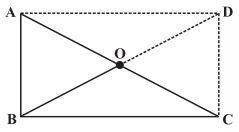Exercise 3.4 Page: 55
1. State whether True or False.
(a) All rectangles are squares.
(b) All rhombuses are parallelograms.
(c) All squares are rhombuses and also rectangles.
(d) All squares are not parallelograms.
(e) All kites are rhombuses.
(f) All rhombuses are kites.
(g) All parallelograms are trapeziums.
(h) All squares are trapeziums.
Solution:
(a) False.
Because, all square are rectangles but all rectangles are not square.
(b) True
(c) True
(d) False.
Because, all squares are parallelograms as opposite sides are parallel and opposite angles are equal.
(e) False.
Because, for example, a length of the sides of a kite are not of same length.
(f) True
(g) True
(h) True
2. Identify all the quadrilaterals that have.
(a) four sides of equal length (b) four right angles
Solution:
(a) Rhombus and square have all four sides of equal length.
(b) Square and rectangle have four right angles.
3. Explain how a square is.
(i) a quadrilateral (ii) a parallelogram (iii) a rhombus (iv) a rectangle Solution
(i) Square is a quadrilateral because it has four sides.
(ii) Square is a parallelogram because it’s opposite sides are parallel and opposite angles are equal.
(iii) Square is a rhombus because all the four sides are of equal length and diagonals bisect at right angles.
(iv)Square is a rectangle because each interior angle, of the square, is 90°
4. Name the quadrilaterals whose diagonals.
(i) bisect each other (ii) are perpendicular bisectors of each other (iii) are equal Solution
(i) Parallelogram, Rhombus, Square and Rectangle
(ii) Rhombus and Square
(iii)Rectangle and Square
5. Explain why a rectangle is a convex quadrilateral. Solution
Rectangle is a convex quadrilateral because both of its diagonals lie inside the rectangle.
6. ABC is a right-angled triangle and O is the mid-point of the side opposite to the right angle. Explain why O is equidistant from A, B and C. (The dotted lines are drawn additionally to help you).

Solution
AD and DC are drawn so that AD || BC and AB || DC
AD = BC and AB = DC
ABCD is a rectangle as opposite sides are equal and parallel to each other and all the
interior angles are of 90°.
In a rectangle, diagonals are of equal length and also bisects each other.
Hence, AO = OC = BO = OD
Thus, O is equidistant from A, B and C.